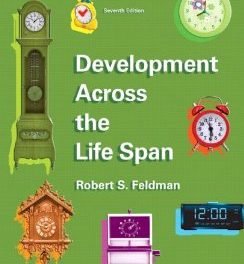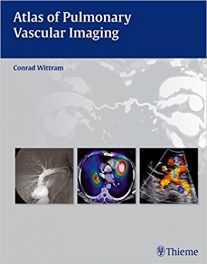 Editors: Rod Rohrich, MD and Jamil Ahmad, MD
Editors: Rod Rohrich, MD and Jamil Ahmad, MD
Publisher: Thieme – 1,677 pages, plus Credits, Index
Book Review by: Nano Khilnani
This book is a corollary to Dallas Rhinoplasty, which was first published in 2002, and many of the contributors to that were attendees to the first annual Dallas Rhinoplasty Symposium in 1984. After two more editions of that book in 2007 and 2014, it became known as the ‘bible of rhinoplasty’ as the editor emeritus of that major work Dr. James P. Gunter describes it in the Foreword to this book.
What is secondary rhinoplasty? It is essentially revision rhinoplasty because the primary rhinoplasty failed to meet expectations either of the surgeon or the patient, or both. So this book is about why ‘nose jobs’ fail and how to make them better the second time around.
At the end of this book review, we will take a close look at chapter 1, Why Primary Rhinoplasty Fails, and outline the issues involved.
For this book, 75 physicians and surgeons (including some residents and fellows) from all over the United States and 13 other countries – Brazil, Canada, China, Germany, Hong Kong, Iran, Italy, Jordan, Mexico, South Korea, Turkey, the Netherlands, and the United Kingdom – contributed content by authoring its chapters. They are mainly facial plastic and reconstructive surgeons, but some are specialists in craniofacial surgery, maxillofacial and oral surgery, and otolaryngology – head and neck surgery.
This book consists of two volumes, and 64 chapters. We list its 10 Parts below to provide you a broad overview of its contents:
Volume I
- Part One: Perioperative Concepts (chapters 1 to 5)
- Part Two: Surgical Concepts (chapters 6 to 9)
- Part Thee: The Approach (chapters 10 and 11)
- Part Four: The Nasal Dorsum (chapters 12 and 13)
- Part 5: The Nasal Tip (chapters 14 and 15)
- Part 6: The Alar Rims and Columella (chapters 16 to 18)
- Part 7: The Aar Base (chapters 19 and 20)
- Part 8: The Nasal Airway (chapters 21 to 23)
- Part 9: Nasal Reconstruction (chapters 24 to 29
- Part 10: Personal Approaches to Secondary Rhinoplasty (chapters 30 to 35)
Volume II
- Chapters 36 to 64
As a purchaser of this print edition you can access the E-book version and other valuable resources available for you online. Go to https://online.vitalsource.com/user/new, then:
- Create your VitalSource Bookshelf account or log on to it if you already have an account.
- Redeem the code by scratching off the grey film on the inside front cover of this book
You can download the E-book version of this book on your PC or Mac, iPhone, iPad Touch, iPad, Android phone or other smart phone, tablet, or on your Kindle Fire. If you have any questions whatever on downloading, please visit: http://support.vitalsource.com/
Let us take a look at chapter 1, Why Primary Rhinoplasty Fails which is authored by Rod J. Rohrich and Jamil A. Ahmed.
They write at the outset: ”Rhinoplasty is one of the most challenging aesthetic procedures we do. It is difficult to learn, difficult to teach, and difficult to ultimately achieve results that are consistently good and reproducible.”
They point out that successful rhinoplasty is challenging because it:
- Has aesthetic and functional components
- Requires techniques for managing different tissue with not only short-term but also long-term consequences
- Involves working with the nose which plays a key role in facial aesthetics
- Involves working with patients who have high expectations for a positive outcome
These are some key issues to consider why a primary rhinoplasty fails:
- Patient selection
- Managing patient expectations
- Inadequate or poor preoperative analysis
- Incorrectly selecting or poorly performing the most appropriate intra-operative technique
- Inadequate treatment of or creating a functional problem
- The unpredictability of healing
- Psychological issues
Each of these factors outlined above that inhibit optimal results are discussed at length in this chapter, with a number of preventive tips and solutions provided by the authors who have years of experience and well-developed. acquired insight.
Photos are also provided of patients who have irregularities, asymmetries, deformities, and many other undesirable facial features.
Some key concepts to be learned and to remember when dealing with patients:
- Always under-promise and over-deliver
- A similar aesthetic sense between surgeon and patient is critical for success
- Patients need to be exposed to information at least three times to understand it
- Patients who desire perfection will be disappointed
- If the patient cannot understand what just cannot be done, do not do the operation
- Adopting an algorithmic approach that primarily uses techniques with more predictable outcomes before those with unpredictable outcomes will help you improve your success
- A surgeon’s instincts and insight should be followed when they indicate the patient should not have surgery
- Do not operate on emotionally or psychologically unstable patients
We believe in the saying ‘practice makes perfect’ as well as that deep knowledge, solid experience, well-developed skills, good insight, and steady judgment are critical to success in any endeavor. From going through what has been written in this book, we believe the two editors of this book have such qualities.
As for the authors – based on the fact that they have the educational backgrounds required to get MD degrees, licenses to practice, specialized training in their fields, and having been chosen by the editors to contribute their knowledge for this book – we also believe that all this has added much value to this book.
Editors:
Rod Rohrich, MD, FACS is Professor and Founding Chairman, and Distinguished Teaching Professor in the Department of Plastic Surgery at the University of Texas Southwestern Medical Center in Dallas, Texas
Jamil Ahmad, MD, FACS is Director of Research and Education at The Plastic Surgery Clinic in Mississauga, Ontario; and Assistant Professor in the Division of Plastic and Reconstructive Surgery in the Department of Surgery at the University of Toronto in Toronto, Ontario, Canada
Illustrators:
Brenda L. Bunch, MA, MS
Jennifer C. Darcy, MS, CMI






